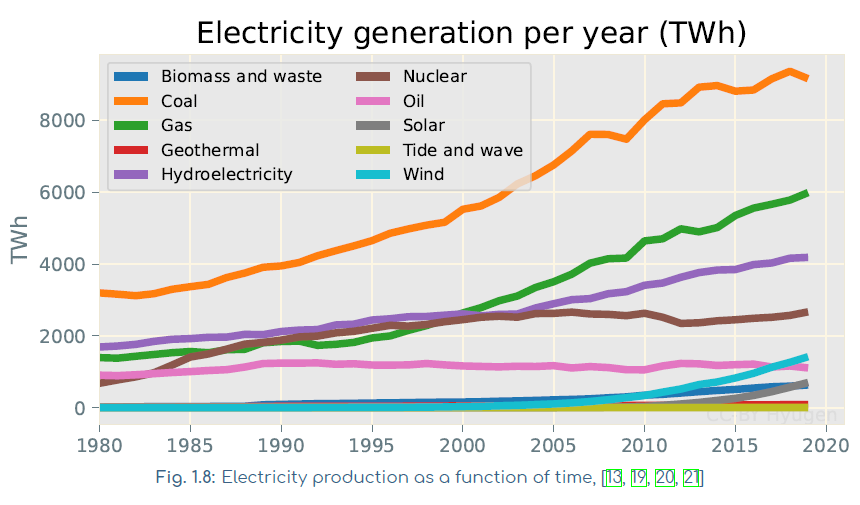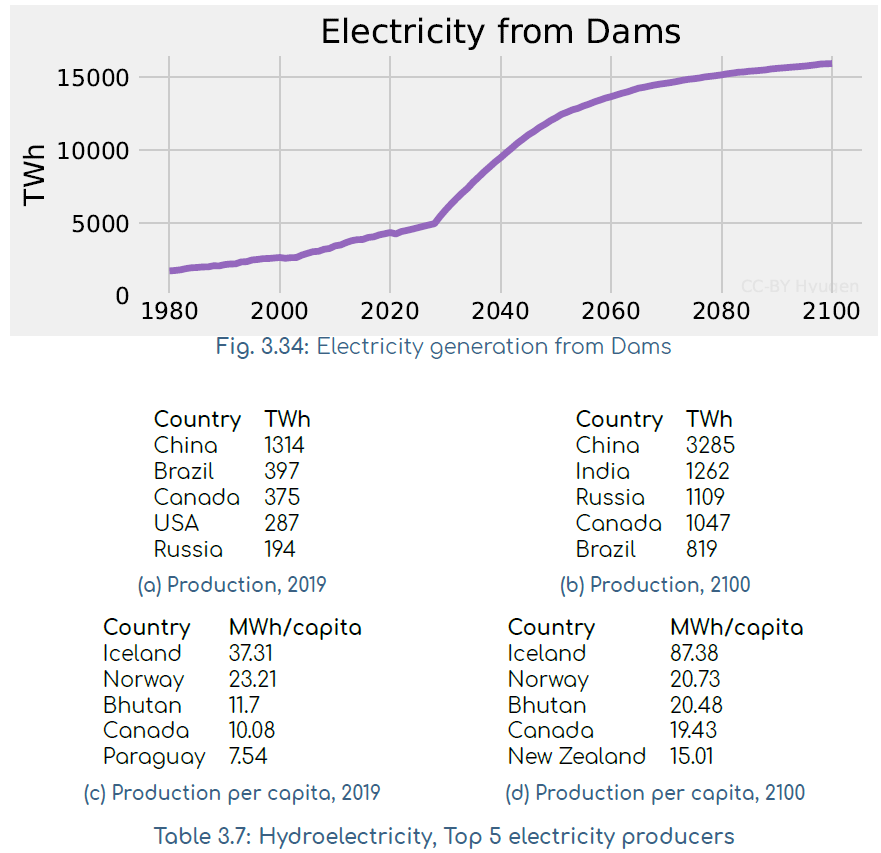How I assessed the global potential of hydroelectricity

This article is part of a series on the DEC Report. The DEC report is a 200+ pages freely accessible report I wrote on climate change and energy. It assesses the world’s potential to tackle climate change by removing GHG emissions in energy and agriculture, and it assesses how we can optimize this transition.
- ➡️➡️ The DEC Report (pdf)
- 🌊 Hydropower potential (1/8)
- ☀️ Solar potential (2/8)
- 🌬️ Wind potential (3/8)
- 🏭 Nuclear potential (4/8)
- 🛢 How much fossil fuel do we consume each year? (5/8)
- 🔥 Energy, EROI and limits to growth (6/8)
- ☢️ How many people died because of the Chernobyl disaster? (7/8)
- ⚡ Why do we close nuclear reactors? (8/8)
Global hydropower potential
Global hydropower potential mainly refers to how much electricity we can produce from dams. Hydroelectricity is a low-carbon source of energy (https://www.ipcc.ch/site/assets/uploads/2018/02/ipcc_wg3_ar5_annex-iii.pdf, A.III.2: median of 24 gCO2eq/kWh vs > 400 for gas and > 800 for coal).
Dams are currently the leading source of low carbon electricity in the world and come just after coal and natural gas.

As you can see, hydroelectricity production has continuously increased during the last decades. In order to tackle climate change and reduce energy issues, it is extremely interesting to assess the full potential of this energy in the world.
Multiple studies attempted this assessment:
- Systematic high-resolution assessment of global hydropower potential
- Multi-model assessment of global hydropower and cooling water discharge potential under climate change
- A comprehensive view of global potential for hydro-generated electricity
For the DEC report I mainly used “Systematic high-resolution assessment of global hydropower potential”.
The paper estimates that, at most, 50 PWh/year of hydroelectric power are available, and cites other estimates:
A gross theoretical available potential of 36 to 128 PWh/year, a technical potential of approximately 8 to 26 PWh/year, and an economically feasible potential of 8 to 21 PWh/year
A part of this potential is already exploited in some countries, mostly in Europe. In order to assess the current potential (=max_potential-already_exploited_potential), I take this 50 PWh estimate. I reduce it such that it’s inside the range for the “economically feasible potential” and such that countries which are already at full potential have a new potential of zero. And I remove the already installed potential for hydroelectricity. Here is the result:

Dams also can’t be installed everywhere. Based on where they are located in the WRI’s global power plant database and based on population density, I also estimated where new dams could be installed in theory.

As you can see there may be a large potential in some places, but because not enough people actually live in these places, it’s harder to forecast a large installation of dams there.
Installing dams also requires enough energy. It’s harder for small countries to have enough power and manpower to build a lot of large dams. In the report, I assessed how fast countries installed dams in the past based on their energy production.

As you can see, some countries were very fast: Bhutan, Norway, Brazil and Canada all have installed dams faster (y-axis ΔTWh/y) than other similar countries (x-axis, useful energy). In the DEC report, countries can’t do more than the blue line of this graph.
Overall, in this configuration of the DEC model, I don’t expect countries to install much more than 10~15 PWh of hydroelectricity. As you can see, hydroelectricity would go from ~5PWh to 15Pwh, which would be an incredible increase. Yet, it’s insufficient alone to replace the > 100 PWh of fossil energy we currently consume. But it could be enough to replace a significant portion of fossils we use for electricity (~15 PWh of coal+gas). Yet, where we consume a lot of coal and gas for electricity, there isn’t necessarily enough waterflows to install dams.

Note: while dams are usually low-carbon, it’s important to know that in some situations they can emit a lot of CO2eq because of the methane they emit. While their median gCO2eq/kWh is at 24, their max is at 2200. Climate-friendly dams can’t be built everywhere, and dams can also have negative impacts on the local environment (damages to fish / aquatic species habitat).
Results

It seems plausible that countries like Iceland, Norway, Bhutan, Canada and New Zealand could produce enough electricity from dams to be autonomous, and even to export this electricity in some situations.
Links
You can see how some of these results were used in much more details in the DEC report. Some of the data and models I used are also available on Github.
👏 if you liked this article and I’ll do more!